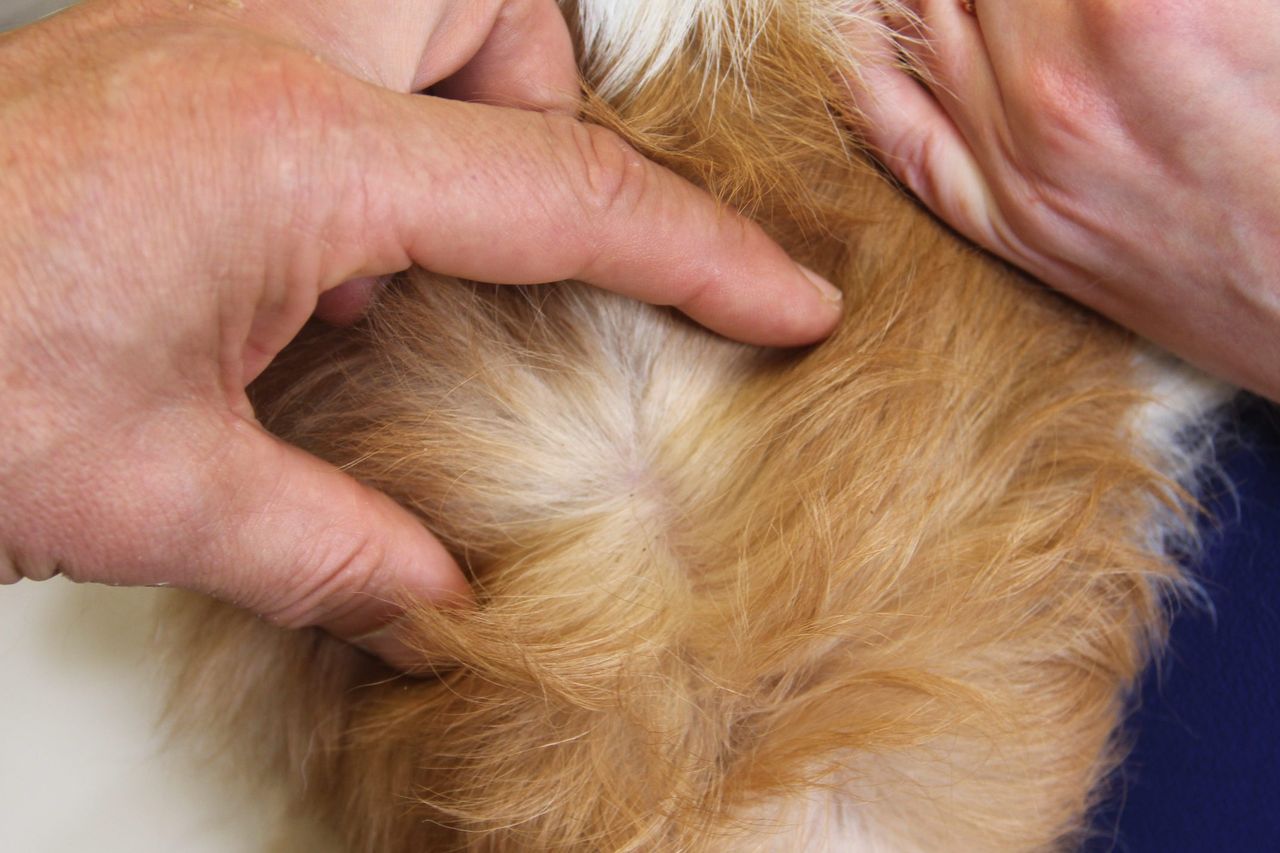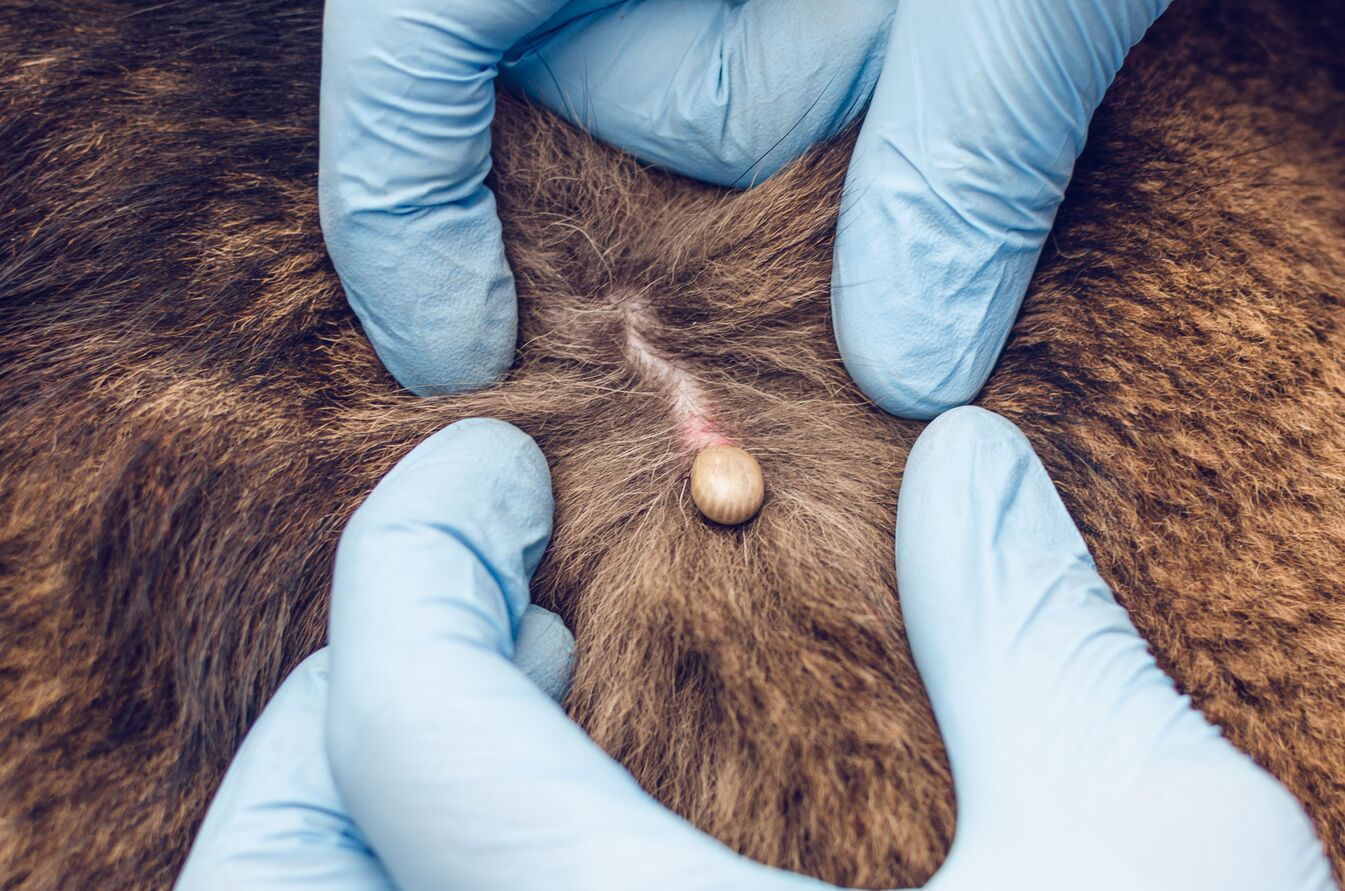Home>Health & Wellness>Common Health Issues>What Do Ticks And Fleas Look Like On Dogs


Common Health Issues
What Do Ticks And Fleas Look Like On Dogs
Modified: February 21, 2024
Learn about the common health issues of ticks and fleas on dogs, including what they look like and how to identify them. Protect your pet with this essential information.
(Many of the links in this article redirect to a specific reviewed product. Your purchase of these products through affiliate links helps to generate commission for Pawsomeoldies.com, at no extra cost. Learn more)
Table of Contents
Introduction
When it comes to the well-being of our furry companions, keeping an eye out for potential health threats is crucial. Ticks and fleas are among the most common parasites that can affect dogs, causing discomfort and potential health issues. Understanding how to identify these pests is essential for pet owners to take proactive measures in protecting their dogs.
Ticks and fleas are small, blood-sucking parasites that can latch onto a dog's skin and coat, causing irritation, itching, and in some cases, transmitting diseases. These pests thrive in warm and humid environments, making dogs particularly susceptible to infestations, especially during the spring and summer months.
By learning to recognize the appearance of ticks and fleas, pet owners can promptly address any infestations and seek appropriate treatment. This article will delve into the distinct characteristics of ticks and fleas, providing valuable insights into their appearance and behavior. Additionally, we will explore the key differences between these two types of parasites, equipping pet owners with the knowledge needed to safeguard their canine companions from these pesky invaders.
Read more: What Do Tick Images On A Dog Look Like
Identifying Ticks on Dogs
Ticks are small arachnids that belong to the same family as spiders and scorpions. These blood-feeding parasites can pose a significant threat to the health of dogs, making it crucial for pet owners to be able to identify them. Ticks vary in size, ranging from as small as a poppy seed to as large as a pencil eraser when engorged with blood. Their appearance changes as they feed, making it essential to recognize them at different stages.
Physical Characteristics
Ticks have a rounded or oval-shaped body, which can be flat or slightly raised, depending on whether they have recently fed. Their coloration ranges from brown to reddish-brown or gray, making them adept at blending in with a dog's fur. When engorged with blood, ticks become more noticeable, often appearing as small, dark, or reddish-brown bumps on the dog's skin.
Common Hiding Spots
Ticks tend to favor specific areas on a dog's body, such as the ears, head, neck, and feet. These parasites are skilled at finding concealed spots where they can latch on and feed without being easily detected. Therefore, it's essential for pet owners to thoroughly inspect these areas, especially after outdoor activities or walks in wooded or grassy areas.
Movement and Behavior
When searching for ticks on a dog, it's important to note that these parasites can move relatively slowly. They may be found crawling on the skin or burrowed into the fur, making it necessary to part the hair and examine the skin closely. Ticks attach themselves firmly to the dog's skin using specialized mouthparts, making them challenging to remove without proper technique.
Read more: What Does A Tick Scab Look Like On A Dog?
Identifying Tick Bites
Identifying ticks on dogs also involves recognizing the signs of tick bites. These may appear as small, red, inflamed areas on the skin, often with a central dark spot where the tick has attached itself. It's important to note that some dogs may not exhibit any immediate symptoms after a tick bite, making regular tick checks a crucial part of preventive care.
By familiarizing themselves with the physical characteristics, common hiding spots, movement, and behavior of ticks, pet owners can effectively identify these parasites on their dogs. Early detection is key to preventing potential health issues and ensuring the well-being of canine companions. Regular grooming and thorough inspections can aid in promptly identifying and addressing any tick infestations, ultimately safeguarding the health of beloved pets.
Identifying Fleas on Dogs
Fleas are tiny, wingless insects that are notorious for causing discomfort and irritation to dogs. Identifying these pesky parasites is essential for pet owners to take proactive measures in protecting their canine companions from infestations. Fleas are adept at hiding within a dog's fur and can reproduce rapidly, making early detection crucial in preventing widespread infestations.
Physical Characteristics
Fleas are small, dark brown insects with flattened bodies, enabling them to move swiftly through a dog's fur. Their bodies are designed for jumping, allowing them to navigate easily from one host to another. When examining a dog for fleas, it's essential to part the fur and look for small, fast-moving insects. Fleas are typically around 1 to 2 millimeters in length, making them challenging to spot with the naked eye.
Common Hiding Spots
Fleas often congregate in specific areas on a dog's body, such as the base of the tail, the abdomen, and the neck. These parasites are skilled at concealing themselves within the fur, making them elusive to detect. Additionally, flea eggs and larvae may be present in the dog's environment, such as bedding, carpets, and upholstery, further complicating the eradication process.
Movement and Behavior
When attempting to identify fleas on a dog, it's important to observe their behavior. Fleas are agile and can quickly move through the fur, making them challenging to catch. They may also exhibit jumping behavior when exposed, leaping away from direct light or movement. This evasive behavior can make it difficult to capture fleas for inspection, emphasizing the need for thorough and patient examination.
Signs of Infestation
In addition to spotting live fleas, pet owners should be vigilant for signs of flea infestation on their dogs. Common indicators include excessive scratching, biting, or licking, particularly in the areas where fleas tend to congregate. Furthermore, dogs with flea infestations may develop red, irritated skin, known as flea allergy dermatitis, as a result of their sensitivity to flea saliva.
By familiarizing themselves with the physical characteristics, common hiding spots, movement, behavior, and signs of infestation associated with fleas, pet owners can effectively identify these parasites on their dogs. Early detection is crucial in preventing widespread infestations and ensuring the well-being of canine companions. Regular grooming, flea combing, and environmental management are essential components of flea prevention, aiding in the prompt identification and eradication of these troublesome parasites.
Key Differences between Ticks and Fleas
Ticks and fleas, while both being blood-feeding parasites that can affect dogs, exhibit distinct differences in their physical characteristics, behavior, and potential health implications. Understanding these variances is essential for pet owners to effectively address infestations and safeguard the well-being of their canine companions.
Physical Characteristics
Ticks are arachnids, belonging to the same family as spiders and scorpions, while fleas are wingless insects. Ticks have a rounded or oval-shaped body, which can vary in size depending on their stage of feeding. In contrast, fleas have flattened bodies, enabling them to move swiftly through a dog's fur. Ticks are typically brown, reddish-brown, or gray in color, while fleas are dark brown. Additionally, ticks are often easier to spot when engorged with blood, appearing as small, dark bumps on the dog's skin, whereas fleas are challenging to detect due to their quick and evasive movements.
Feeding Behavior
Ticks and fleas differ in their feeding behavior and attachment to the host. Ticks attach themselves firmly to a dog's skin using specialized mouthparts, making them challenging to remove without proper technique. In contrast, fleas move quickly through the fur and feed by biting the host and consuming its blood. While ticks may remain attached to the host for an extended period, fleas tend to move on and off the host more frequently, making them elusive to capture.
Health Implications
Both ticks and fleas can transmit diseases to dogs, but the specific health implications differ. Ticks are known to transmit a variety of diseases, including Lyme disease, Rocky Mountain spotted fever, and ehrlichiosis, posing significant health risks to dogs. On the other hand, fleas are notorious for causing discomfort and irritation, often leading to allergic reactions and dermatitis in dogs. Additionally, flea infestations can result in anemia, particularly in young or small dogs, due to the loss of blood from repeated flea bites.
Environmental Impact
Ticks and fleas also differ in their environmental impact and lifecycle. Fleas lay eggs in the dog's environment, such as bedding, carpets, and upholstery, contributing to widespread infestations. Additionally, flea larvae can survive in dark, humid environments, further complicating eradication efforts. Ticks, however, do not infest the environment in the same manner as fleas, as their lifecycle primarily occurs on the host or in outdoor habitats.
By recognizing the key differences between ticks and fleas, pet owners can effectively tailor their preventive measures and treatment strategies. Understanding these distinctions empowers pet owners to take proactive steps in protecting their dogs from these pesky parasites, ultimately promoting the health and well-being of their beloved companions.
Conclusion
In conclusion, being able to identify ticks and fleas on dogs is a crucial skill for pet owners, enabling them to take proactive measures in protecting their canine companions from potential health threats. Ticks, with their arachnid characteristics and ability to transmit a variety of diseases, pose significant risks to dogs, making early detection and prompt removal essential. On the other hand, fleas, with their rapid reproductive capabilities and propensity to cause discomfort and irritation, require vigilant monitoring and preventive measures to prevent widespread infestations.
By familiarizing themselves with the physical characteristics, common hiding spots, movement, behavior, and signs of infestation associated with ticks and fleas, pet owners can effectively safeguard their dogs from these pesky parasites. Regular grooming, thorough inspections, and environmental management play pivotal roles in early detection and prevention, ultimately promoting the health and well-being of canine companions.
Furthermore, understanding the key differences between ticks and fleas empowers pet owners to tailor their preventive measures and treatment strategies accordingly. While ticks are known for their potential to transmit diseases and their attachment to the host, fleas are notorious for their rapid movement and ability to cause allergic reactions and dermatitis in dogs. By recognizing these distinctions, pet owners can implement targeted approaches to protect their dogs from these blood-feeding parasites.
In essence, the well-being of our furry companions hinges on our ability to recognize and address potential health threats such as ticks and fleas. By equipping pet owners with the knowledge and skills to identify these parasites, we can collectively work towards creating a safer and healthier environment for dogs, ensuring that they can enjoy a life free from the discomfort and health risks posed by these pesky invaders. Through education, vigilance, and proactive care, pet owners can play a pivotal role in safeguarding the health and happiness of their beloved canine companions.












